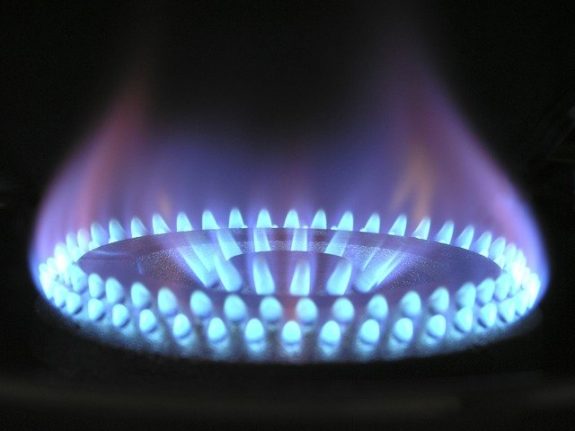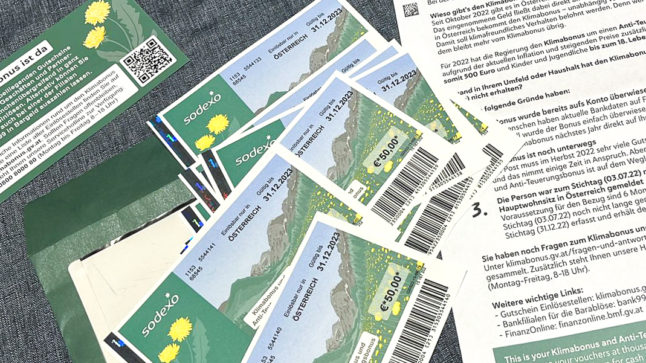At the start of the war in Ukraine in February, Austria was heavily dependent on Russian gas to fulfil its energy demands. But what is the situation now?
Here’s what you need to know.
Austria’s dependence on Russian gas (pre-war)
Austria imports gas from Russia via the pipeline system that runs through Ukraine.
Prior to Russia’s invasion of Ukraine, Elisabeth Christen, Senior Economist at the Austrian Institute of Economic Research (Wifo) told The Local that 80 percent of Austria’s gas was imported from Russia.
FOR MEMBERS: ENERGY CRISIS: Will Austria have enough gas for winter
However, Christen said Russia’s economy was also very reliant on capital from exporting gas, so while Austria – and Europe – relied on Russia to meet energy demands, it was a “mutual dependence”.
In fact, back in February, 47 percent of all gas supplies to Europe came from Russia. Norway was the second largest gas importing country to Europe, supplying 21 percent of all gas to EU countries.
Russia’s invasion of Ukraine and subsequent sanctions resulted in the EU bringing forward plans to switch to greener forms of energy. The EU has also made decisive steps to separate itself from a reliance on Russian oil and gas.
Where else does Austria import gas from?
In March, Austria imported ten percent of gas from Norway, five percent from Germany, five percent from other sources and the rest from Russia.
But by August, Reuters reported that Austria’s dependence on Russian gas was already down by 50 percent and that the country’s gas storage facilities were filling up.
OMV (Austria’s leading energy company) has also secured an extra 40 TWh of natural gas supplies from Norway and the Netherlands from October 2022 to September 2023.
READ MORE: ‘Unimaginable’: Austria prepares to reopen coal power station
Additionally, the Austrian Federal Government has secured an extra 20 TWh of gas from two tenders, of which 8.5 TWh has been confirmed by the Ministry of the Environment to be from non-Russian sources.
Despite this, Austria (along with Germany and Italy) is still one of the most vulnerable western European EU countries to a stop in the Russian gas supply, according to Fitch.
Could Austria’s gas supply be affected by the ongoing conflict?
One big question – both before Russia’s invasion of Ukraine and since the start of EU sanctions – is whether Austria could run out of gas.
Possible scenarios include supplies being interrupted by military conflict or in retaliation by Russia’s President Vladimir Putin.
Currently, gas is supplied from Russia to European countries (including Austria) on a long-term contractual basis.
But there have been temporary stops to the supply from Russia in recent months attributed to “maintenance work”, and the supply (when it flows) has often been far below the contracted amount.
READ ALSO: EXPLAINED: How to keep energy bills down in Austria
Wifo Economist Christen previously told The Local that in the worst case scenario of gas reserves running low, the use of existing supplies could be limited within Austria, and Liquified Natural Gas (LNG) could be sourced from other countries.
What action is Austria taking to mitigate the risk to gas supplies?
The Austrian Federal Government has been racing to fill up storage facilities over the summer months, and on September 15th it was reported that Austria’s storage tanks were 74 percent full – not far from the 80 percent goal for November 1st.
Austria has capacity to store 95.5 terawatt hours (TWh) or 8.6 billion cubic metres of natural gas. The gas is stored underground in depleted natural gas reservoirs at a depth of between 500 and 2,300 metres.
Austria’s gas storage facilities are located in Haidach, Aigelsbrunn, Auerbach (the facility is known as 7-Fields), Puchkirchen, Haag, Tallesbrunn and Schönkirchen.
FOR MEMBERS: READER QUESTION: When should I turn on my heating in Austria this year?
OMV manages 26 percent (25.3 TWh) of Austria’s natural gas storage volume and the rest is divided between RAG, Uniper Energy and Astora.
The Haidach storage facility was previously managed by Gazprom and Astora, but the agreement with Gazprom came to an end after Gazprom stopped making deliveries. Since August 1st, Haidach has been managed by Astora and RAG.
Austria shares the Haidach (Salzburg) and 7 Fields (Upper Austria) facilities with Germany. Both facilities are fully linked to the German gas system and the two countries recently signed a solidarity agreement to ensure cooperation in the event of an energy crisis.
However, in a recent report by Der Standard, Economic Researcher Achim Wambach said Europe is in a “serious situation” and the next two years won’t be easy.
In particular, Wambach referenced the pressures on industry and said 25 percent less gas will have to be used this winter, otherwise it’s likely that supplies will have to be rationed.
The federal government is also working on rapid expansion plans of renewable energy, such as wind, solar and biogas (created by the breakdown of organic matter like food and animal waste).
Looking to the future, Austria plans to be completely independent of Russian gas by 2027.



 Please whitelist us to continue reading.
Please whitelist us to continue reading.
Member comments